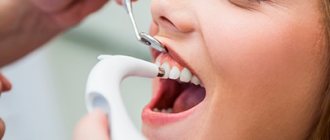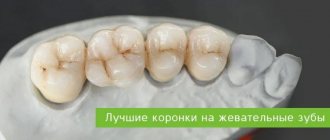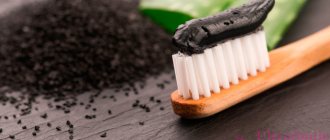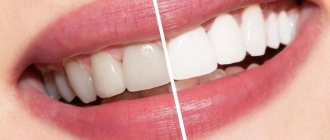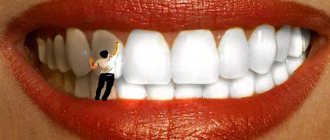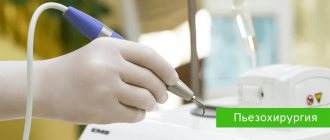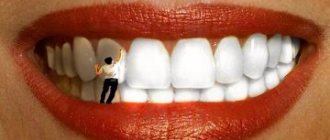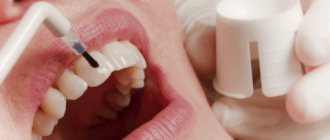Author of the article:
Soldatova Lyudmila Nikolaevna
Candidate of Medical Sciences, Professor of the Department of Clinical Dentistry of the St. Petersburg Medical and Social Institute, Chief Physician of the Alfa-Dent Dental Clinic, St. Petersburg
Today, there are many ways to whiten teeth in dentistry. Anyone who wants to get a delightful Hollywood smile will definitely find the most convenient and affordable option for themselves. You can change the color of your teeth a couple of shades to a healthy shade with professional cleaning, or you can achieve a snow-white smile with more serious cosmetic procedures. It all depends on your taste, desires and health. In any case, you can easily find the best method with the help of your dentist.
It must be remembered that whitening is a serious procedure that does not always have a positive effect on dental health. Therefore, it is important to take the choice of method and subsequent care seriously.
Let's talk about the differences, pros and cons of in-office whitening methods to help you navigate their diversity.
Advantages and disadvantages of the procedure
Positive sides:
- Quick results. In a single visit, you can noticeably lighten the enamel by several tones, the effect depends on its condition.
- No medical indications. The client of the dental clinic decides for himself whether he needs to whiten his teeth.
- Many methods with different effects and prices.
- No pain or other discomfort.
- Almost all methods are universal, which means they can be used for patients of different ages.
- There is no need to go through a recovery period.
- Getting rid of complexes and awkwardness when communicating with others.
The technique also has negative aspects:
- The most effective methods have a high cost.
- The effect does not last long. The smile will remain snow-white for 5-7 years, but no more.
- Increased sensitivity of enamel, its thinning. Pain may occur while eating if the food or water is too cold or too hot.
- Inability to change the color of filling material, implants, artificial crowns.
- The risk of losing the natural shade of teeth and excessive whiteness increases.
- The need to adhere to dietary nutrition to maintain results. It is not recommended to drink coffee, strong black tea, or eat foods with a high concentration of bright natural pigment.
Professional techniques - a chance to get the smile of your dreams
Conventionally, all methods used in dental clinics can be divided into two large groups:
- providing for activation of the solution by light;
- not requiring activation of the gel with light.
The gel itself, applied to the crowns, has approximately the same composition. Its active compounds are hydrogen peroxide and urea. Dental products differ from each other only in the concentration of these compounds.
The ZOOM method is considered the most effective today. It requires activation of the gel with a lamp. If its first versions caused discomfort in patients and required the use of local anesthetics, then with the advent of ZOOM-4 the need for pain relief disappeared.
Contraindications to teeth whitening
Doctors recommend completely abandoning the procedure or postponing it indefinitely during pregnancy and breastfeeding, as well as when:
- individual intolerance to the components of the whitening composition;
- the presence of a milk bite that has not changed to a permanent one;
- oncology;
- increased sensitivity of enamel;
- tissue damage due to traumatic exposure or other reasons;
- pulpitis in chronic form;
- orthodontic treatment;
- dental diseases (for example, caries) in the acute phase;
- a large number of fillings, fixed dentures, artificial crowns (possible color balance disturbances, unnatural whiteness of certain areas).
Each case is reviewed by a dentist; the doctor may prohibit lightening of the teeth to avoid adverse reactions. Why do you need teeth whitening if it will lead to irreversible consequences? It is likely that the presence of the above circumstances is not an absolute obstacle to a cosmetic procedure, and in the absence of dangerous risks it can be completed.
How to reduce harmful effects
A dazzling smile does not mean that your teeth are completely healthy. Behind the thin enamel is dentin. It is a structure with yellowish or grayish pigmentation. Whitening uses active chemical compounds that lead to thinning of the enamel layer or damage to its integrity. This also affects the condition of the oral cavity.
To minimize negative consequences, the dentist performs the following actions:
- Conducts a visual inspection and assessment of the condition of hard and soft tissues in the mouth.
- Identifies possible contraindications.
- Selects a safe and effective method of teeth whitening.
- Uses any available methods to diagnose and relieve pathological processes.
Composition of whitening gels
For both professional and non-professional whitening, special gels with hydrogen or urea are used. It may also contain amorphous calcium phosphate, potassium nitrate or fluorine. These elements give teeth brightness and shine and heal damaged enamel. Some gels contain components that have a soothing effect on gums and teeth.
How to keep your teeth white longer
Depending on the technique used, the effect of professional whitening can last for more than one year. However, some patients return to the clinic after a few months for a repeat procedure. To ensure that your smile remains dazzling for a long time, doctors recommend adhering to the following rules:
- do not eat for 3 hours after teeth whitening, you can only drink clean water, then you must adhere to a special diet;
- Do not use a brush with hard bristles, as this will only increase sensitivity;
- purchase a paste without abrasive particles;
- rinse your mouth, use dental floss, and irrigator after each meal;
- Mouth rinses should not contain chlorhexidine (it stains teeth);
- follow a schedule of visits to the dentist for preventive examinations (at least once every six months);
- complete smoking cessation for 2-3 days, preferably for several weeks.
Special diet
To maintain the effect for a long time immediately after the procedure, you must adhere to a special diet. It is important to minimize the consumption of foods with bright colors. It is advisable to eat:
- porridge;
- dairy (but not fermented milk) products;
- fish and seafood;
- chicken, rabbit;
- egg white;
- white fruits and vegetables (such as bananas).
Along with eliminating food containing dyes from the diet, it is recommended to avoid coloring spices. This is turmeric, paprika. Dentists also do not advise eating smoked meats, citrus fruits, any berries, drinking coffee, black tea and alcoholic beverages.
Types of teeth whitening: pros and cons
There are no ideal lightening methods. Each has positive and negative sides that the patient must be prepared for. This is why you need to consult your dentist first.
Mouthguards
These are removable devices that are made of special materials that are not subject to oxidative processes. As a rule, structures are used to correct bites and change the position of teeth. If the mouth guard is installed correctly, it does not cause discomfort (pain or other discomfort). After the adaptation period, the patient completely forgets about the presence of a foreign object in the mouth.
The device is created from an impression, which the dentist first makes during the initial appointment. The finished structure is filled with a whitening agent and placed on the upper or lower jaw.
Advantages:
- low cost compared to other methods;
- Possibility of teeth whitening at home.
Flaws:
- insufficient visual effect, mouth guards will not get rid of intense yellowish deposits;
- risk of developing an allergic reaction;
- The method is contraindicated for persons with orthodontic structures in the mouth (plates, braces, etc.).
Laser technique
This method is one of the most effective. You can walk with a snow-white smile for up to 10 years, of course, if you do not ignore medical instructions. In this case, the enamel becomes white in just one session.
A gel composition is applied to the teeth, after which its components are activated using a laser, oxygen ions are formed, which penetrate the enamel layer and deactivate the coloring pigment.
Pros:
- To lighten by more than 5 tones, one visit to the clinic is enough;
- absence of pain and other discomfort;
- the device operates for a short time (about 20 minutes);
- the gel used has antiseptic properties and prevents inflammatory processes in the mouth;
- the components of the drug strengthen the enamel and protect it from external influences.
Negative sides:
- high price compared to alternative methods;
- increased tooth sensitivity immediately after the procedure.
Ultrasonic cleaning
In this case, enamel lightening occurs due to the removal of hard plaque and other deposits, even in the interdental spaces. With the help of vibrations, all layers are mechanically removed. After all the manipulations, the specialist applies a special paste-like composition to the teeth to improve the protection of the dentition from external influences and various chemical irritants.
Ultrasound helps to get rid of even subgingival plaque. The stone is also removed.
Pros:
- in one visit to the dentist you can lighten your teeth several shades;
- during the procedure, the entire oral cavity is cleaned, and not just hard tissues;
- absence of pain and other unpleasant sensations;
- affordable price.
Minuses:
- To consolidate the effect, ultrasonic cleaning should be repeated annually;
- the result may seem insufficient if the enamel is too dark;
- the natural shade of dentin tissue does not change;
- A visit to the doctor takes up to an hour.
Chemical bleaching
The dentist applies highly concentrated preparations that contain hydrogen peroxide or other active ingredients. As a result, dentin is whitened, its shade becomes lighter by 5-7 tones or more.
Advantages of the method:
- an effective procedure that removes plaque and lightens the dentinal layer;
- if all manipulations were performed according to the rules, the result can last up to 4-5 years.
Minuses:
- increased sensitivity of enamel after lightening;
- high price;
- the risk of burns to the mucous membranes if the dosage regimen of the chemical composition is not followed;
- It takes many procedures (about 7) at intervals of 2-3 days to achieve the desired effect.
Air Flow
The surface of the teeth is processed mechanically, without affecting the dentinal layer. The doctor uses a sandblasting machine for this. Even the most difficult to reach areas (for example, interdental spaces) will be clean after exposure to a mixture of water, air and soda. The enamel is polished and the smile becomes dazzling.
Advantages:
- absence of pain and other discomfort;
- the entire oral cavity is cleansed, including the space between the teeth, under the gums, etc.;
- fabrics are not damaged, abrasive particles act very gently;
- the patient is not bothered by increased tooth sensitivity immediately after brushing;
- affordable price.
Minuses:
- insufficiently expressed visual effect;
- a greater number of contraindications compared to alternative methods;
- the color lasts up to a year.
Photobleaching
One of the most modern techniques with ZOOM or Luma-Arch devices. The enamel brightens due to ultraviolet exposure. The lamp warms up the lightening gel applied to the teeth, thereby enhancing its effect.
Pros:
- the procedure lasts about 15 minutes;
- per visit you can make the enamel 10 shades lighter;
- the effect lasts up to 4 years if you follow the rules established by your doctor and adhere to basic hygiene standards;
- absence of pain syndrome.
Minuses:
- high cost (methods involving mechanical cleansing will be much cheaper);
- It is advisable to completely exclude foods with bright dyes from the diet;
- subsequent remineralization may be required;
- before photobleaching, it is necessary to remove microprostheses and veneers;
- bleaching is uneven, hard-to-reach areas are not lightened, but only the front incisors and canines;
- If the procedure technique is not followed, the risk of burns to the mucous membranes of the oral cavity increases.
Endobleaching
This technique is also called in-canal bleaching. This method is used when depulpation has been performed, that is, removal of palpable tissue. After the death of the nerve, the teeth darken, so many patients want to lighten them.
The doctor pours a special synthetic composition with a whitening effect into the cavity and places a temporary filling material on top. If the enamel becomes lighter within 10-15 days, the drug is removed and everything is filled.
Advantages:
- you can lighten one or several teeth at once;
- the enamel remains intact because the whitening agent acts from the inside.
Flaws:
- short-term effect (up to a year);
- not suitable for processing both rows;
- the price increases as the number of teeth treated increases.
Home whitening
Not all patients want to visit a dental clinic and prefer to whiten their enamel at home. The most common procedures:
- The use of special whitening pastes. Typically, such compositions contain abrasives, affecting the entire surface of the dentition. As a result, it is possible to lighten the enamel layer by several tones.
- Special stripes. They resemble a plaster and are glued to the incisors of the upper and lower jaws. The adhesive side contains a gel with concentrated chemical compounds. An oxidation process takes place in the mouth, which promotes quick and easy cleansing.
- Traditional methods. Fans of “grandmother’s” recipes use hydrogen peroxide, soda, activated carbon and other substances.
What are the advantages of self-lightening at home:
- low price;
- ease of implementation.
The list of disadvantages is much more extensive than the list of advantages. This:
- low effectiveness compared to professional care;
- negative impact on enamel, damage to the mucous membranes of the oral cavity, the appearance of hypersensitivity to any irritant;
- high risk of allergies and poisoning due to careless use and, as a result, ingestion of bleaching mixtures.
What is Zoom-4
Whitening Zoom-4 is a cosmetic procedure for lightening tooth enamel by exposing it to chemical ingredients. The technique is an improved version of the Zoom-3 technology. Its advantage is a more gentle effect on the teeth (the top layer is not destroyed) and a reduced process time. The main active element that penetrates the enamel and discolors it is hydrogen peroxide, more precisely, one of its forms is carbamide peroxide. Standard concentration is 25%. It is safe and has no harmful effects on the body (when used externally).
During the procedure, the dentist uses a special lamp to activate a chemical reaction. This lamp has the option of regulating the light flow modes. The doctor can choose the optimal one for the conditions of a particular clinical case in order to increase the comfort of the process for the patient. Under the influence of radiation, atomic oxygen is released from hydrogen and penetrates the pores of tooth enamel, destroying pigment cells by an oxidative cleavage reaction.
Important: dentists recommend that patients with serious discoloration of teeth use not only clinical whitening, but also supplement it with home whitening. The doctor gives out a dental guard and chemical reagents in syringe tubes, and talks about the sequence of actions. The intensity of home manipulations is weaker, so the risk of accidental chemicals. burns are excluded if the given recommendations are followed.
Is teeth whitening worth it?
This is a very responsible procedure; if you make mistakes, you can start irreversible pathological processes. Doctors recommend dental cleanings twice a year to remove accumulated plaque. This is a superficial method that does not lighten the dentition. If a patient wants to whiten his teeth, he is indicated for professional whitening in dentistry.
Doctors do not recommend performing the procedure at home with store-bought pharmaceutical formulations. Firstly, it is very difficult to correctly calculate the dosage that will be safe for the enamel and for the entire body if accidentally swallowed. Secondly, even one careless action can lead to burns of the mucous membranes.
After lightening the enamel, you need to be prepared for sensitivity to temperature changes, sour, sweet, and solid foods. In addition, careful hygiene and diet will be required, which not everyone is ready for.
Having studied the indications and contraindications for professional cosmetic teeth whitening, the pros and cons of the procedure, you can choose a technique that is right for you. We invite you to sign up for a preliminary consultation with a Dentiki dentist by calling the number listed on the website or filling out the feedback form.
Content:
- AirFlow is not whitening
- What is real bleaching like?
- Pastes with a whitening effect are the easiest option for improving the appearance of enamel
- Professional techniques - a chance to get the smile of your dreams
- How doctors whiten teeth
- Possible harms of teeth whitening
- When bleaching is harmful and contraindicated
No matter how positively dentists speak about the natural color of enamel, many people want to become the owners of a snow-white smile.
They are not embarrassed by the harm of teeth whitening, since the issue of aesthetics comes to the fore for them. Can whitening activities really harm your health? In fact, most often complications can be avoided. But to do this, you need to make an appointment with an experienced specialist and conduct therapy using the most modern techniques.

